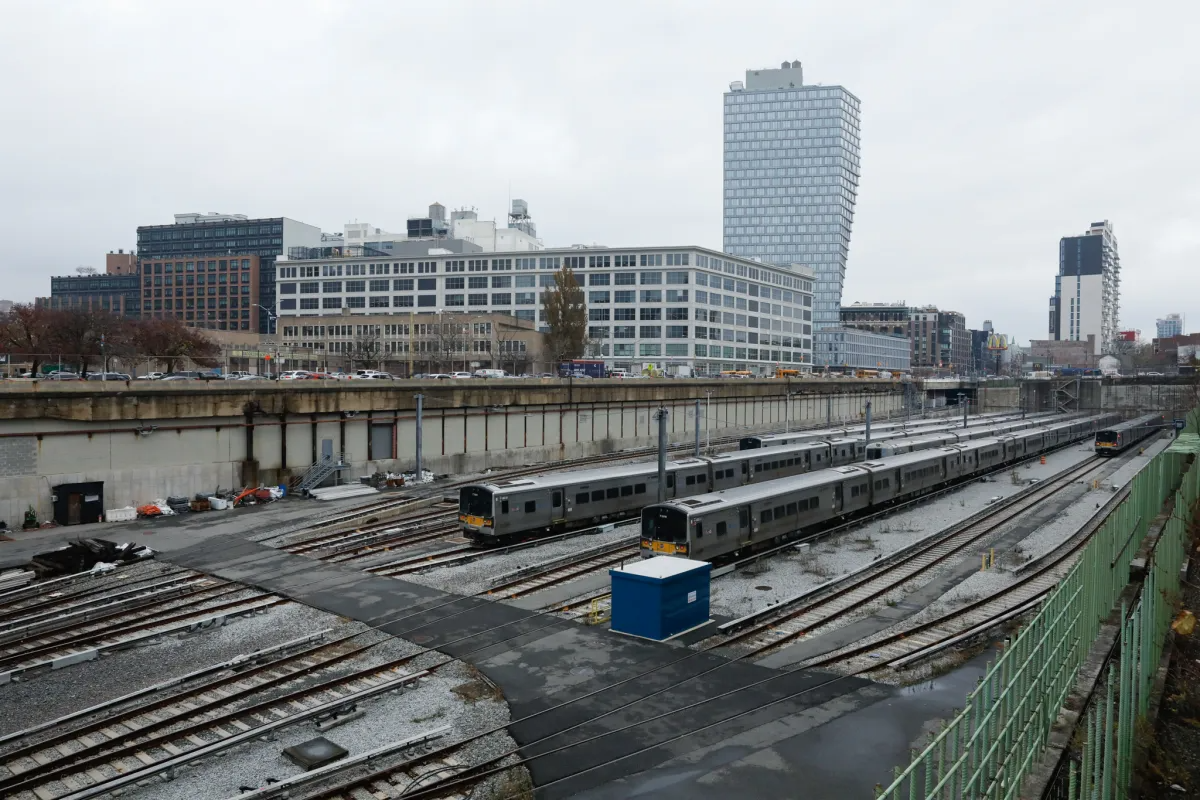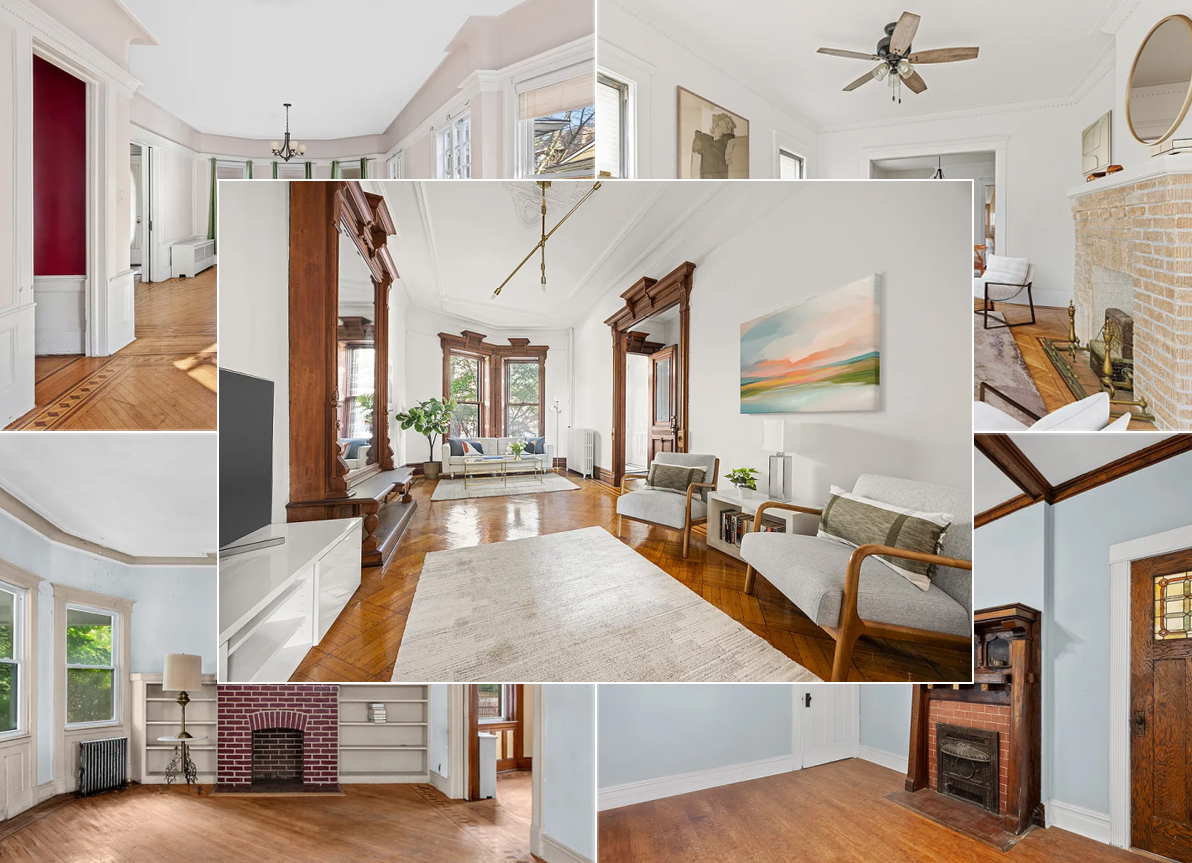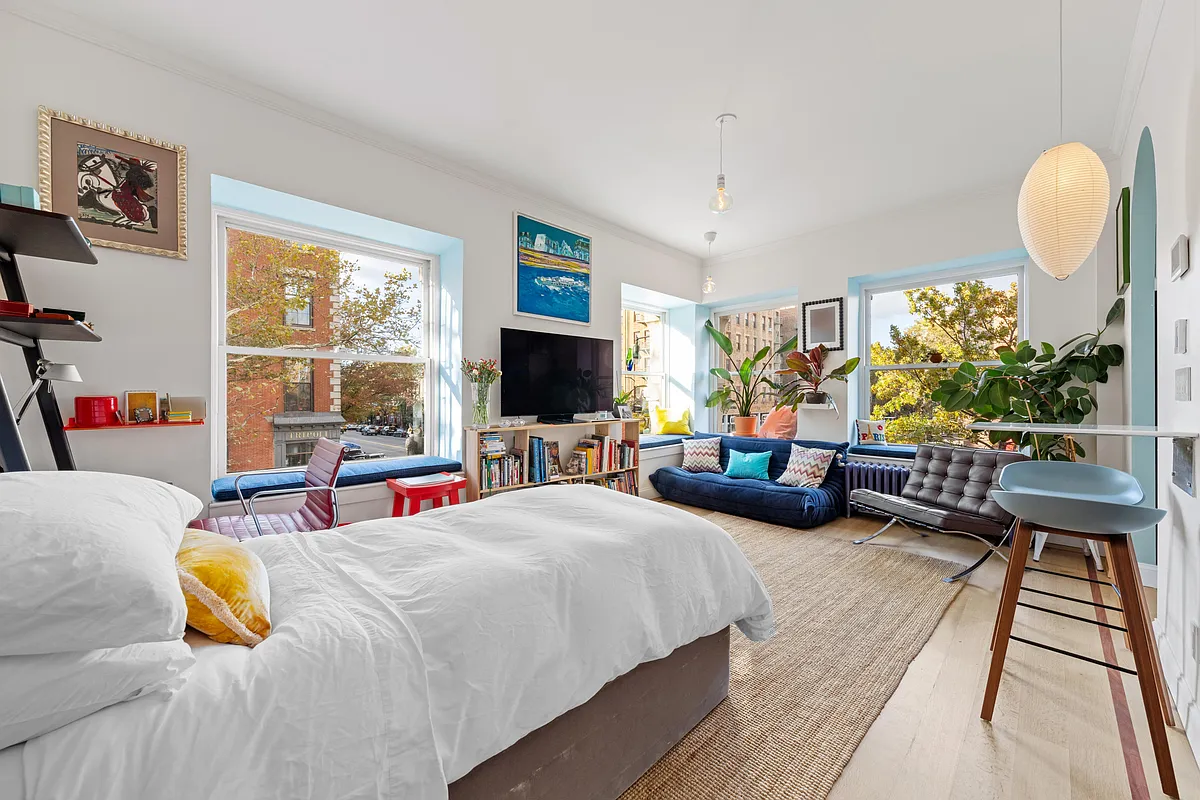The Peculiarly Plain House in Park Slope
Yes, “peculiar” was the adjective ascribed to Stewart Woodford’s red brick house 869 President Street, between 7th and 8th Avenues, courtesy of the Brooklyn Eagle in 1885. While other houses built around that time had the mansard roofs of Second Empire Victorians, or stuck to the details of Queens Anne or traditional brownstone, this place…


Yes, “peculiar” was the adjective ascribed to Stewart Woodford’s red brick house 869 President Street, between 7th and 8th Avenues, courtesy of the Brooklyn Eagle in 1885. While other houses built around that time had the mansard roofs of Second Empire Victorians, or stuck to the details of Queens Anne or traditional brownstone, this place was different. Woodford was a politician and diplomat, and his architect was Henry Ogden Avery, who’d studied at the École des Beaux-Arts in Paris. He gave the place a surprisingly plain 36-foot-wide facade, “with simple round arched windows on the first floor, a pair of small projecting oriels on either side of the second, and three pairs of rectangular windows on the third,” writes Christopher Gray in the NY Times. The magic is in the details: a pair of iron peacocks adorning the door, an art deco cornice in the hall, a strap-work ceiling and terra cotta fireplace in the living room. The current owners, Madelyn and Martin Schloss, have just bought a house nearby, not to abandon the old Woodford residence but to restore and renovate it, and return again.
A Different Drummer of a House [NY Times]
Photo from Property Shark.





Regarding renovations: “They should take a year or more to complete, and the couple found it cheaper to buy a house, on Sixth Avenue, instead of renting.”
Truly, lifestyles of the rich.
I agree – the attention to details makes all the difference. The low mortar:brick ratio makes the place look beautiful.
Great house. Wonderfully wide, too, on top of being different and unique from the rest of the block. I love the ironwork, too.
I think that the loss of ornamentation in more modern buildings is part of the reason even cookie cutter brownstones have an appeal that these buildings never will. The gates, a utilitarian necessity, help make this building special. They could have just as easily been regular bars, but are part of the artistic aesthetic at work here.
In walking around historic neighborhoods, wherever they may be, it’s the details that impress me – the terra cotta trim, ironwork, stained glass, etc. None of these contribute in anyway to structural integrity, or function, or ease of living, but all resonate, to me at any rate, the human desire for beauty in one’s surroundings, the creative use of otherwise mundane materials: brick, iron, glass, and the inventiveness and artistic abilities of their creators. I love it.
I’ve always loved this house.
So glad to hear they are bringing it back to its former glory.
I have always wondered about those two poles holding up the cantilevered windows on the second floor. Nice brickwork for sure. Nicely knit.
seems like it’d be dark inside. Nice brick though.
i happen to think it’s the best architecture on the block, simple and unique because the rest of the brownstones were once considered cookie-cutter out of a catalog.
I thought the most humorous thing in the article is the couple that owns the house needed to do renovation – so not only moved out for renovation to happen but bought a house nearby to live in because cheaper then renting.
How come I never thought of that?